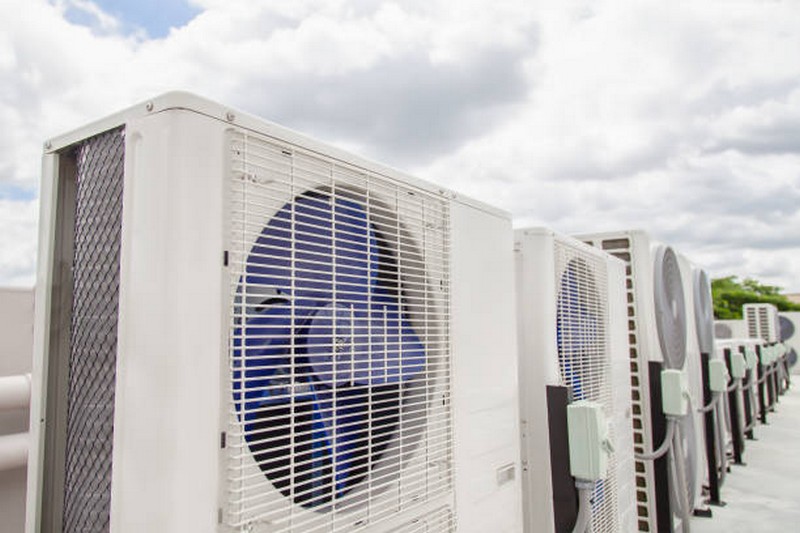Navigating the complexities of selecting and installing the ideal cold room for your business involves understanding a multitude of factors. The right cold room not only enhances your product storage capabilities but also extends the preservation duration of your items significantly. To aid in this process, we’ve compiled a list of frequently asked questions about cold rooms, including insights on cold room panels and installation techniques, enriched with additional queries to cover all bases.
In-depth Answers to Common Cold Room Queries
1. How Does a Cold Room Function?
A cold room operates on principles akin to those of a conventional refrigerator. It involves insulating a designated area and employing cooling units to lower the ambient temperature to a set level, regulated by a thermostat. These units facilitate heat exchange by drawing in air and utilizing refrigerant chemicals to produce a cooling effect. Should the internal temperature deviate from the desired range, the system automatically adjusts to maintain stability.
2. What Constitutes a Cold Room?
The essential components of a cold room include:
- Compressor: Compresses refrigerant gas.
- Condenser: Cools the compressed gas, transforming it into a liquid.
- Expansion Valve: Regulates the flow and expansion of refrigerant liquid into gas.
- Evaporator Coils: Absorb energy and cool down as they boil and expand the refrigerant gas.
- Refrigeration Fans: Facilitate air circulation over the evaporator coils to reduce the room’s temperature.
- Insulated Panels and Doors: Ensure temperature retention with effective insulation.
3. Who Benefits from Using a Cold Room?
Cold rooms serve a broad spectrum of applications, making them beneficial for anyone requiring large-scale, chilled or frozen storage solutions. Food businesses often utilize cold rooms for stockpiling products, thus keeping kitchen refrigerators organized and accessible. Similarly, pharmaceutical entities rely on cold rooms for storing temperature-sensitive medications, vaccines, and injections.
4. How Do You Maintain a Cold Room?
Regular maintenance is crucial for the longevity and efficiency of cold rooms. Issues such as temperature fluctuations can compromise product integrity. Engaging a cold room specialist for routine temperature monitoring and comprehensive inspections ensures the system operates optimally. Proactive maintenance can preempt many common problems.
5. What is the Optimal Temperature for a Cold Room?
The ideal temperature varies depending on your storage needs and the types of products you intend to store. Consulting with a cold room specialist is essential to tailor the installation to your specific requirements. Common temperature settings include:
- Ambient Cold Rooms: Room temperature ranges from 15°C to 25°C, with colder zones between 8°C to 15°C.
- Walk-in Cold Rooms: Maintain a steady temperature of 2°C to 8°C.
- Walk-In Freezer Rooms: Designed for frozen goods, these rooms operate at temperatures down to -15°C.
Additional FAQs for Enhanced Understanding
6. Can Cold Rooms be Customized?
Yes, cold rooms can be extensively customized to suit specific operational needs, including size, temperature ranges, and additional features like humidity control. Customization ensures that your cold room aligns perfectly with your business requirements.
7. What Are the Energy Efficiency Considerations for Cold Rooms?
Choosing energy-efficient components and insulation materials can significantly reduce energy consumption. Features like LED lighting, smart temperature control systems, and high-quality insulated panels contribute to lower operating costs and environmental impact.
8. How Long Do Cold Rooms Typically Last?
With proper maintenance and regular servicing, cold rooms can last for many years, often exceeding a decade of reliable operation. The longevity of a cold room is influenced by the quality of installation, materials used, and adherence to maintenance schedules.
If a company wants to get the most out of its storage options, it needs to know all there is to know about cold rooms, from how they work to the parts that make them up to the best ways to keep them in good repair. Businesses can make well-informed decisions about their cold room installations that match their specific needs by answering these often asked questions and considering other insights. The correct cold room arrangement is critical for preserving quality, increasing shelf life, and simplifying processes when keeping temperature-sensitive products, such as medications, perishable foods, or any other type of goods.

